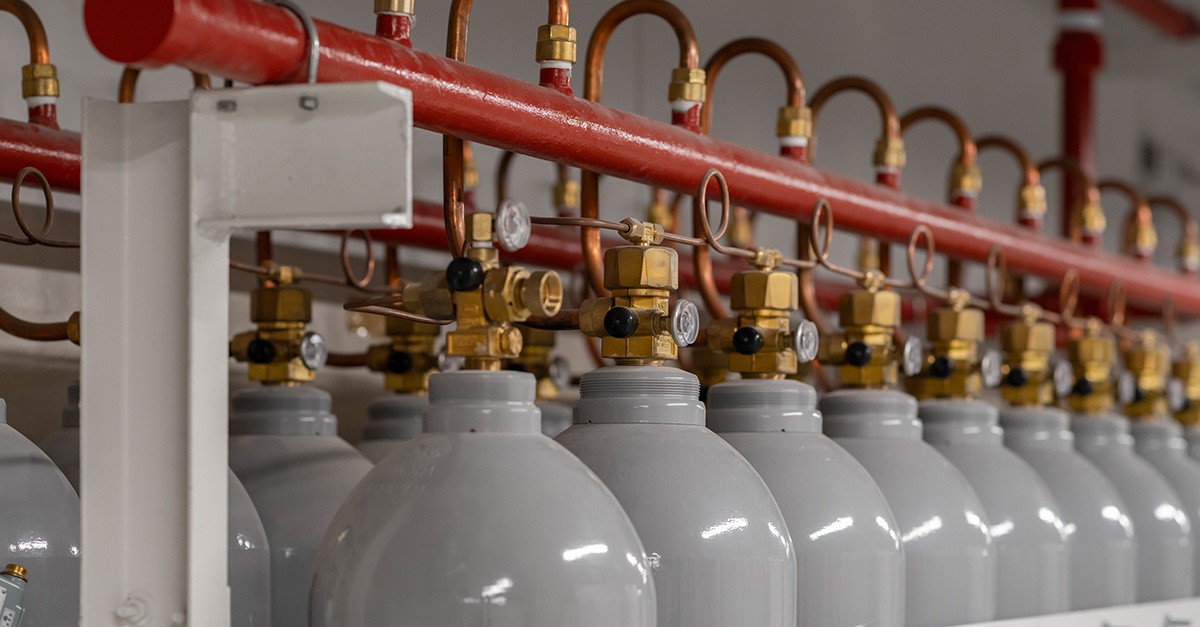
Industrial gas, 19 February
What are industrial gases and how are they used?
Industrial gases are essential components in numerous industrial processes, encompassing energy gases, inert gases, cryogenic gases, and gases refined from air separation units. Each type of gas serves specific purposes across various industries, from energy production and manufacturing to food processing and healthcare.
The selection of appropriate valves and equipment for handling these gases is crucial for ensuring safety, efficiency, and reliability in industrial operations. At Ramén Valves, our technical specialists provide expert solutions to help you navigate even the most challenging operating conditions – from cryogenic to high temperature and highly corrosive processes. In addition to our own high-quality products, including Ramén KS Ball Sector Valves, Ramén BAS Check Valves, and Ramén VAC Vacuum Valves, we offer a wide range of solutions from renowned manufacturers such as HEROSE, Cashco and Badger Meter.
Here’s an overview of various types of gases, their applications, and the suitable products for each.
Energy gases
Energy gases are industrial gases primarily used as fuel sources or in energy production processes. These gases include hydrogen, liquefied natural gas (LNG), compressed natural gas (CNG), and liquefied petroleum gas (LPG). Energy gases are crucial in various industrial processes, such as power generation, heating, and as feedstock in chemical manufacturing.
Examples of energy gas usage in industrial processes include:
- Hydrogen in fuel cells and petroleum refining
- LNG and CNG in power plants and as transportation fuel
- LPG in industrial heating and as a chemical feedstock
Our products for energy gases:
Inert gases
Inert gases are industrial gases characterized by their low reactivity with other substances. The most common inert gases include argon, helium, and nitrogen. These gases are used in applications where chemical stability and non-reactivity are essential.
Examples of inert gas usage in industrial processes include:
- Shielding gases in welding
- Atmosphere control in electronics manufacturing
- Preservation in food packaging
Our products for inert gases:
Cryogenic gases
Cryogenic gases are industrial gases that exist in a liquid state at extremely low temperatures, typically below -150°C (-238°F). Common cryogenic gases include liquid nitrogen, liquid oxygen, and liquid argon. These gases are used in applications requiring very low temperatures or where large volumes of gas are needed in a compact liquid form.
Examples of cryogenic gas usage in industrial processes include:
- Freezing and cooling in food processing
- Superconductivity research
- Medical imaging (MRI machines)
Our products for cryogenic gases:
Gases refined from Air Separation Units (ASU)
Air Separation Units (ASU) are industrial systems used to separate atmospheric air into its primary components: nitrogen, oxygen, and argon. These gases, often referred to as “air gases,” are widely used in various industrial applications due to their abundance and relatively low production costs.
Examples of ASU gas usage in industrial processes include:
- Oxygen in steelmaking and medical applications
- Nitrogen in food packaging and chemical processing
- Argon in welding and metal fabrication
Our products for ASU gases:
If you need help in selecting the right valve for your process, feel free to contact our technical specialists via our live chat for immediate assistance or book a meeting with us.
 Language
Language Swedish
Swedish English
English